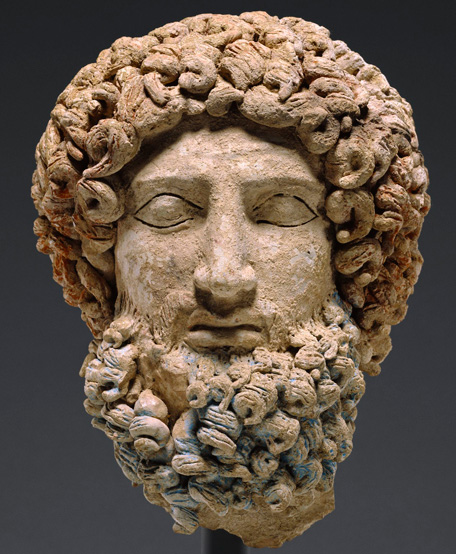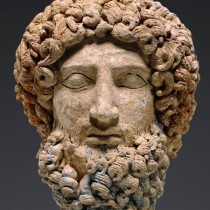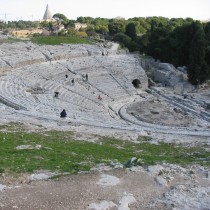Last Thursday, the J. Paul Getty Museum announced plans to “voluntarily return a terracotta head to Sicily representing the god Hades and dating to about 400-300 B.C.” According to the museum’s press release, the Getty acquired the sculpture in 1985. As reported in the LA Times (10/1/2013): “The Getty bought the terracotta head of Hades in 1985 from New York collector Maurice Tempelsman, who had purchased it from London dealer Robin Symes. Getty records show the musuem paid $530,000 for it”.
The reason why the Getty omitted this part of the collecting history (see Looting Matters) remains unknown. However, Getty’s press release gives detailed information about how the museum came to the conclusion that the sculpture should be returned to Italy: “Joint research with colleagues in Sicily over the past two years has yielded previously unknown information on the likely provenance of the sculpture suggesting that it was appropriate to return the object. In keeping with the principle of repatriating works when compelling evidence warrants it, the decision to transfer this head is based on the discovery of four terracotta fragments found near Morgantina in Sicily, similar in style and medium to the Getty head. Getty Museum curators initiated discussions with Sicilian colleagues on the possible relationship between the head and the fragments in 2011, and then worked with the director of the Morgantina Archaeological Park to corroborate the identification. These fragments indicate that the original location of the head was the site of a sanctuary of Demeter, which was clandestinely excavated in the late 1970s”.
Morgantina, as reported in the LA Times, is the same looted archaeological site in Italy, where the former Getty statue of Aphrodite was looted around the same time as the Hades. “The Getty acquired the statue of Aphrodite from Symes in 1988 for $18 million”.
In recent years, other important looted artefacts have been returned to the archaeological museum of Morgantina, among which an ancient silver service (acquired by the Metropolitan Museum of Art) and two marble busts of goddesses by Tempelsman, who also obtained them from Symes.
“The Getty greatly values its relationship with our Sicilian colleagues, which culminated in the 2010 Cultural Collaboration Agreement,” said Timothy Potts, director of the J. Paul Getty Museum. “This collaboration has brought significant opportunities for scholarly dialogue, joint conservation projects, and loans, most notably the ‘Charioteer’ from Mozia that is currently undergoing a thorough seismic conservation assessment and remounting in our conservation studios.”
According to Enrico Caruso, director of the Parco Archeologico di Morgantina, “Close collaboration with the Getty’s curators and conservators on the examination of the head has allowed us to give a name to the sanctuary shrine where several fragments of its curls of hair were found in 1978, as well as a name to the Getty’s anonymous sculpture. It is Hades, god of the Underworld, the terracotta body of which is in the course of an extensive restoration in the Archaeological Museum in Aidone.”
The head will be transferred to the Museo Archeologico in Aidone after it goes on display in the Getty-organized traveling exhibition Sicily: Art and Invention between Greece and Rome. The exhibition will be on view at the Getty Villa from April 3 to August 19, 2013, the Cleveland Museum of Art from September 30, 2013 to January 5, 2014, and will end at the Palazzo Ajutamicristo in Palermo from February to June 2014. The head is currently on view at the Getty Villa as part of the special installation The Sanctuaries of Demeter and Persephone at Morgantina until January 21, 2013.




